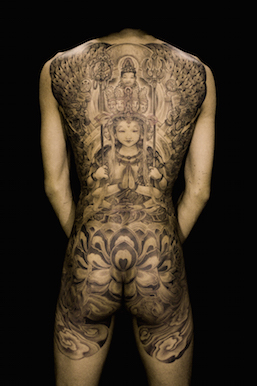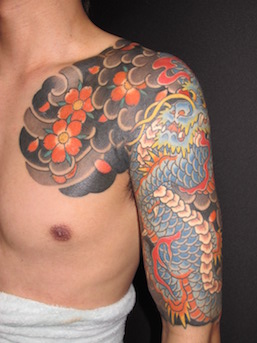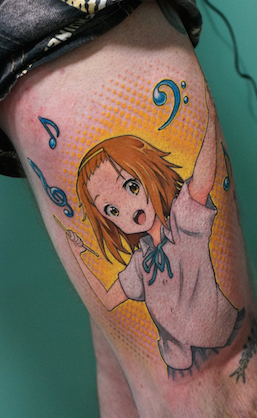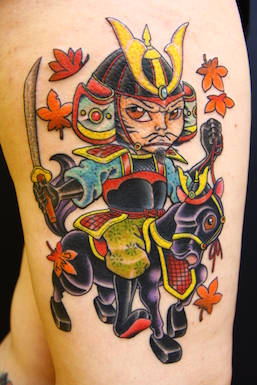The Art and Craft of Japanese Body Ink

As soon as you pick up Brian Ashcraft and Hori Benny’s Japanese Tattoos: History* Culture* Design (Tuttle, 2016), you know you are in for a whirlwind tour of the unique world of irezumi tattoos. This book deals with a topic stigmatized in popular belief for its ties to the Japanese mafia, but which is also a bright and colorful art form packed with flora, fauna and deep symbolism. The authors explore the mysteries of these full-body and sleeve tattoos, presenting accessible and well-researched insights into the world of irezumi.
An introductory chapter reflecting on the roots of irezumi in Japanese culture provides a grounded base for a discussion of the art’s many intricacies and rules, as well as the history of training apprentices with sights set on becoming a horishi (tattoo artist). Ashcraft and Benny sum up each chapter with a profile of a practicing artist, educating the reader on the numerous approaches and entry points into irezumi while praising the yakuza’s enigmatic, underground practice that kept it afloat until it was legalized by Occupation Forces in 1948. As tattooing remains stigmatized to this day in Japan, many may be unaware of the long tradition and high level of planning and research a tattoo entails.
Irezumi are designed to be covered by clothing, changing their ideals from Western concepts of tattoos, which often serve as statements. The contents of irezumi emphasize metaphors and protection through Japanese folklore, myths and the power of nature. Furthermore, the idiosyncratic approach to designing and tattooing a body suit builds a relationship between artist and client unique to irezumi, placing further value on the individuality of the work. The book spotlights several practicing horishi working in different places in Japan, providing an objective overview of techniques, tools, and attitudes varying from city to city.


Japanese Tattoos is a particularly solid guide for those looking to get Japanese-style tattoos or even delve into the practice themselves. Sections covering common themes in irezumi such as Japanese motifs, Chinese and Buddhist written characters, the seasons, gods, heroes and folklore function as starting points for budding irezumi enthusiasts. Through examples delving further into specific aspects of irezumi, each chapter examines fundamental motifs.
As an artisan craft with strict parameters, Japanese tattoos have their rules and universe. Through the breadth of research and interviews, this book confirms the strenuous training apprentices undertake to even be titled an irezumi artist or earn the horishi title, when they conclude their apprenticeship and embark on a lifelong dedication to research and practice. It is from here they are able to take the craft into their own hands and toward exciting new directions.


Horishi artists approach irezumi in diverse ways as they pay respect to the craft while continuing to advance it. Modern styles are distinct from more traditional ones, and the reader learns about unique ways the artisans interpret this craft as its practice evolves. Being one of the oldest traditions of tattooing, irezumi sets a high standard that has greatly inspired tattoo artists in the West in their own practices, apprenticeships and pursuits.
Irezumi is continuing to evolve as the next generation of artists practice it today. The old traditions are not long forgotten, but pave the way for artists to pay respects to tradition and identity in their own unique and exciting approaches. Japanese Tattoos is an admirable exploration of the craft and provides a foundation for further research into the extensive universe of irezumi and its place in Japanese culture.
Simon DeBoer
Simon DeBoer



